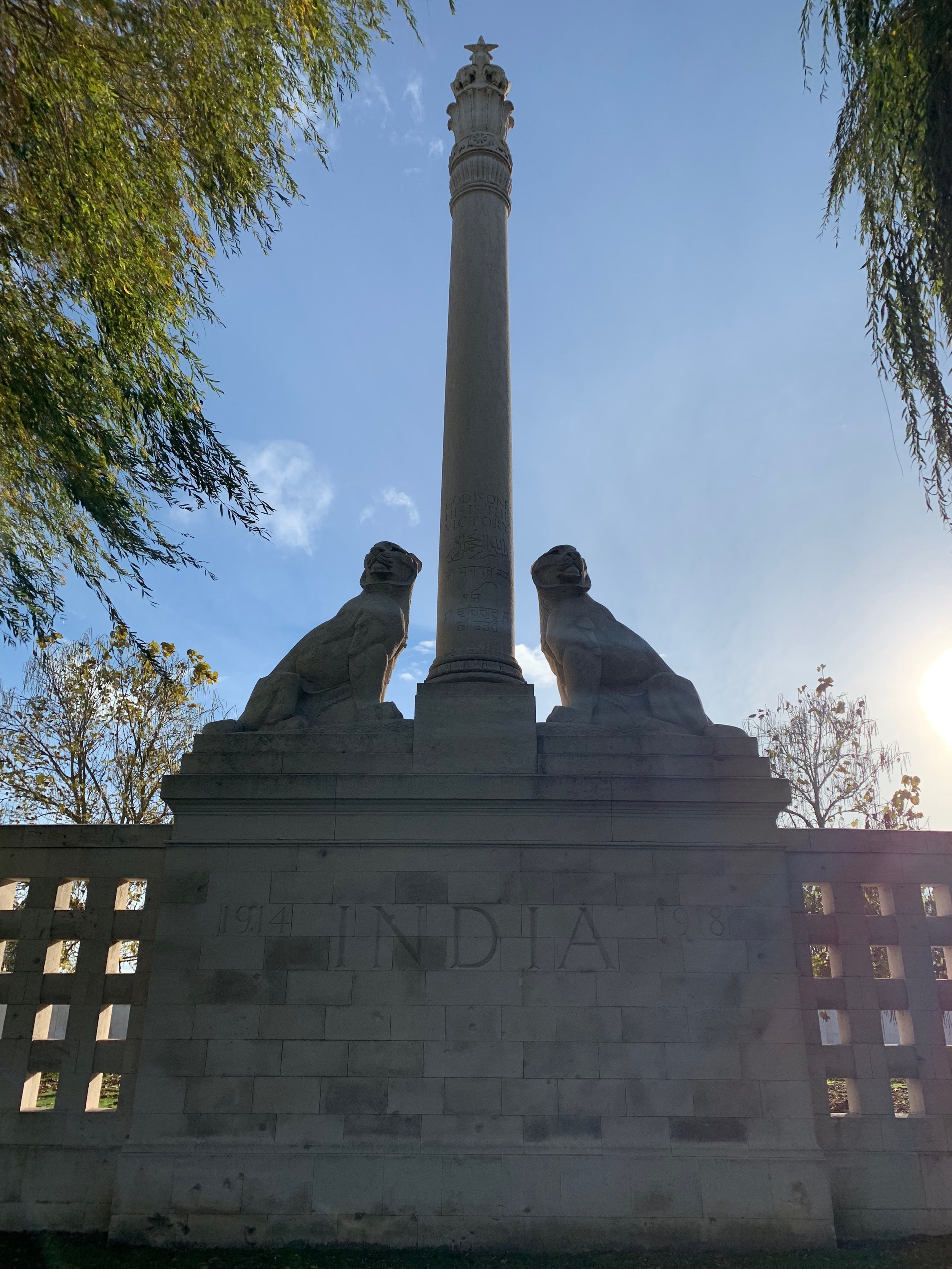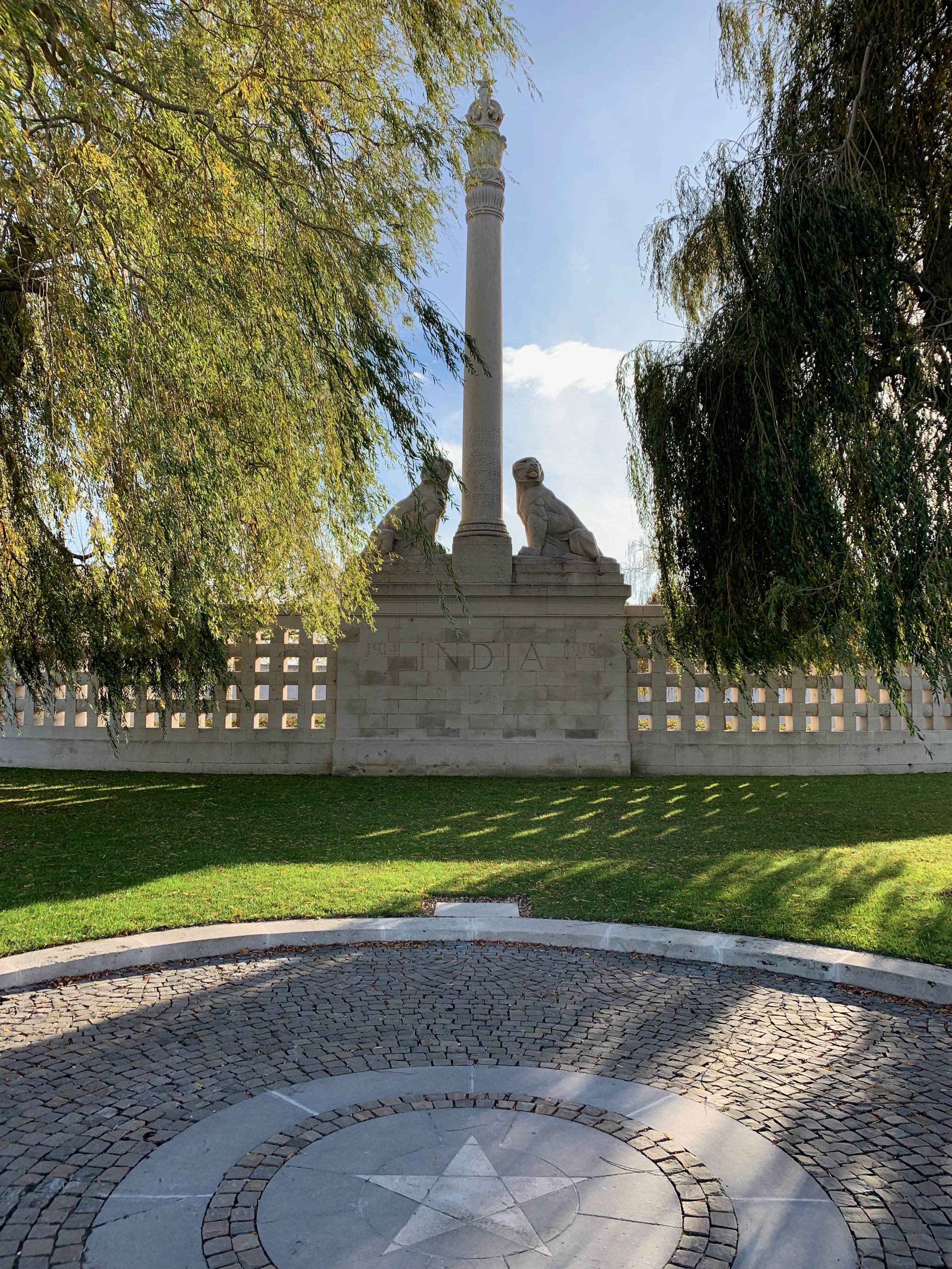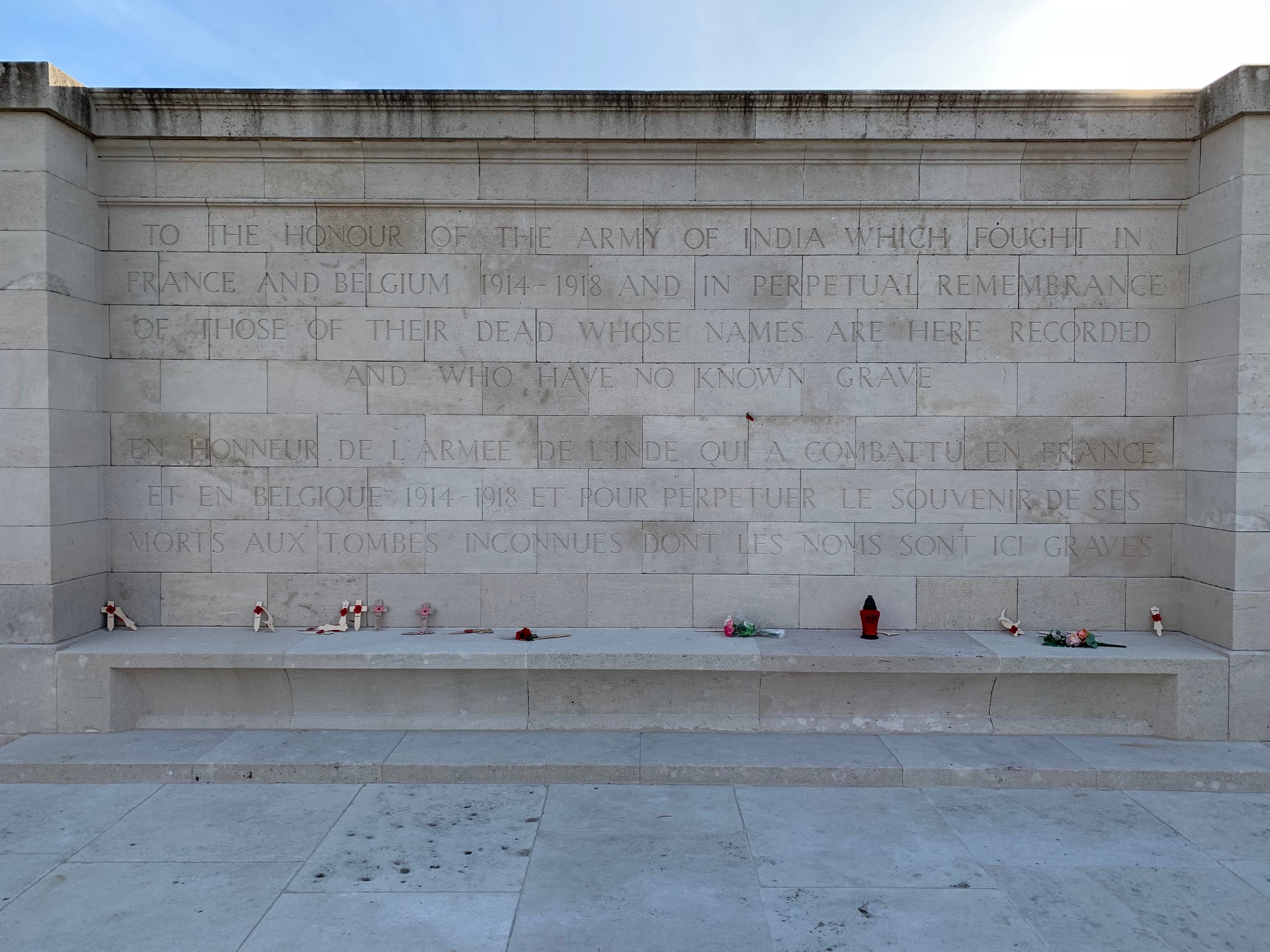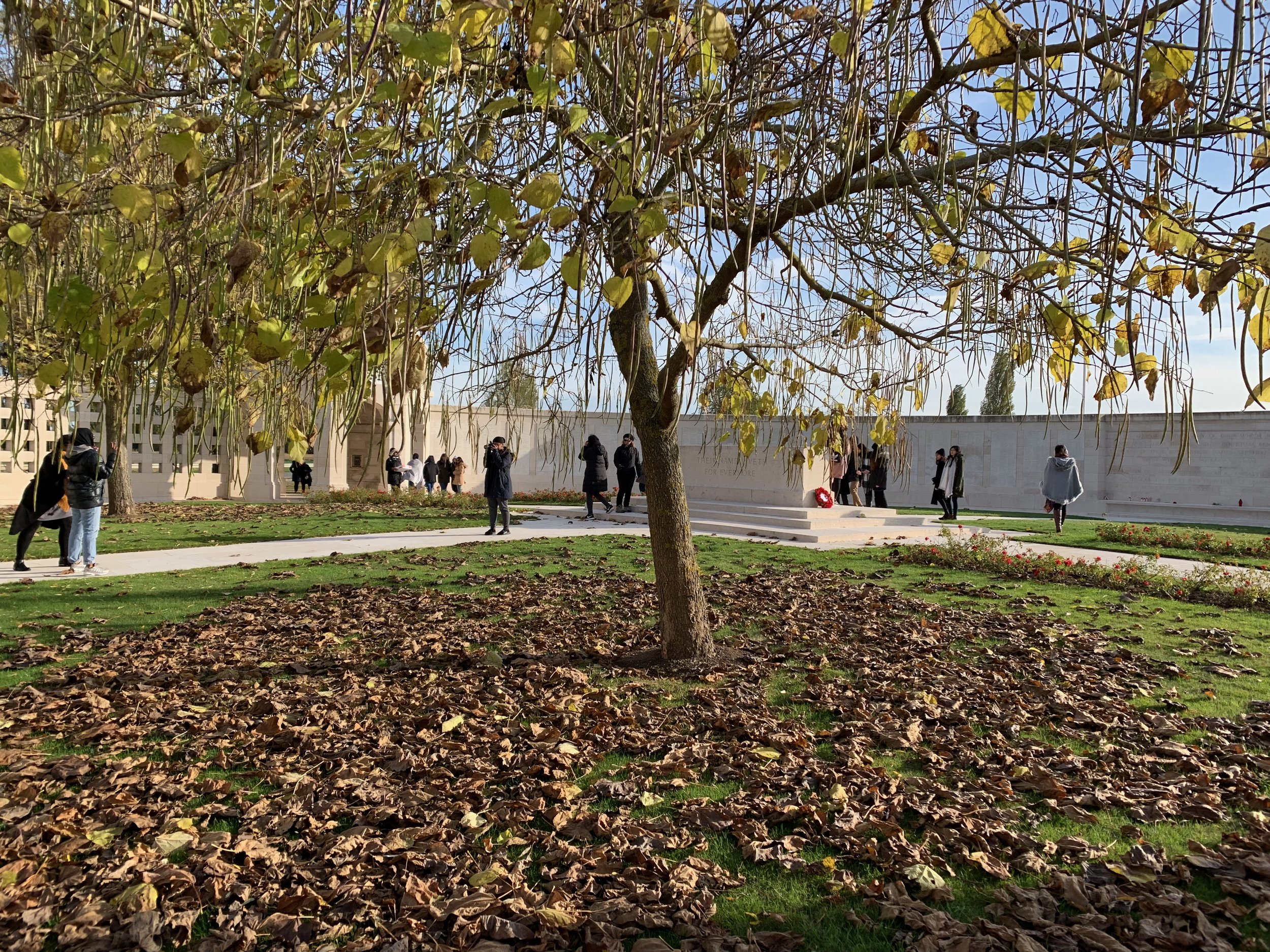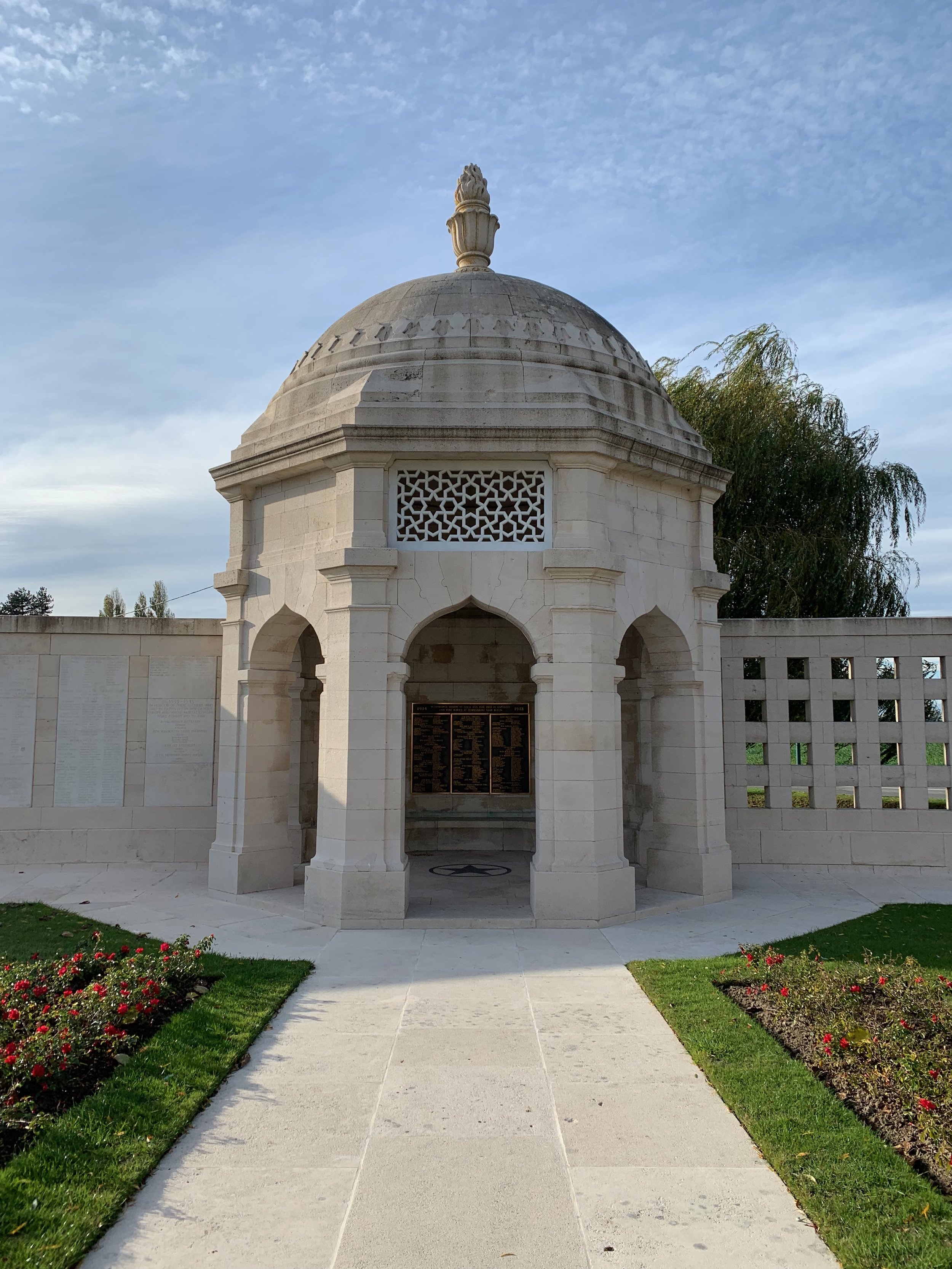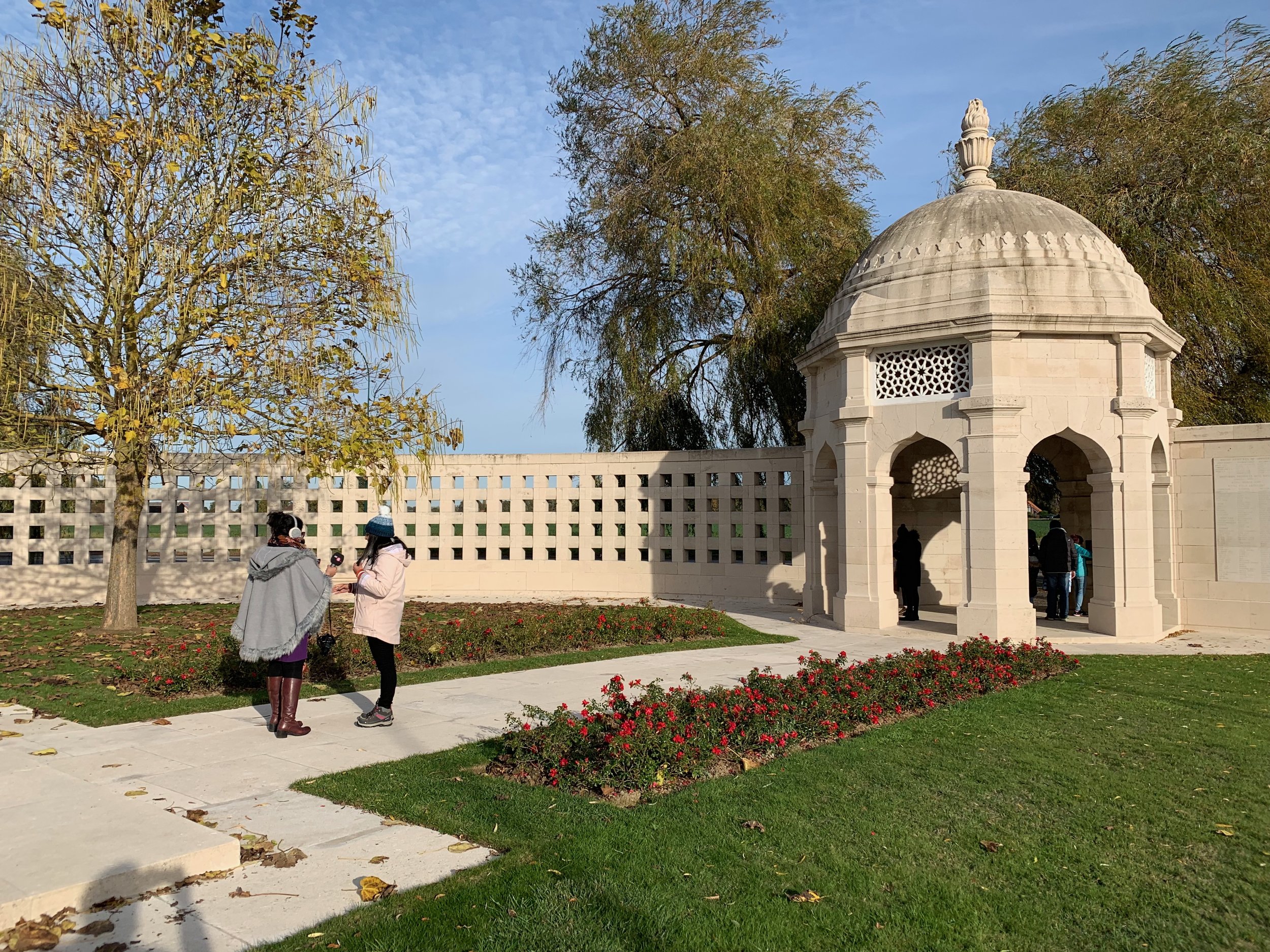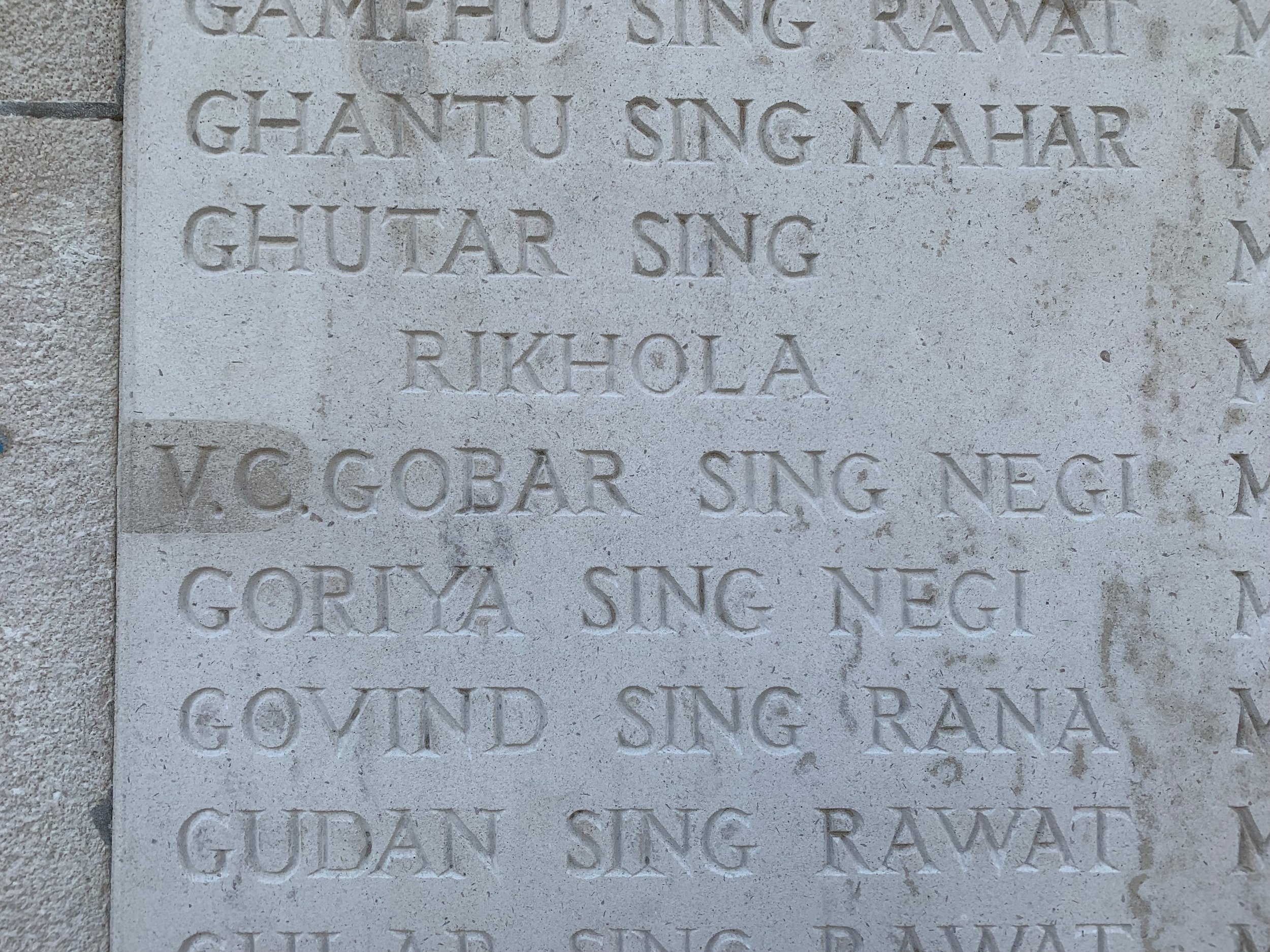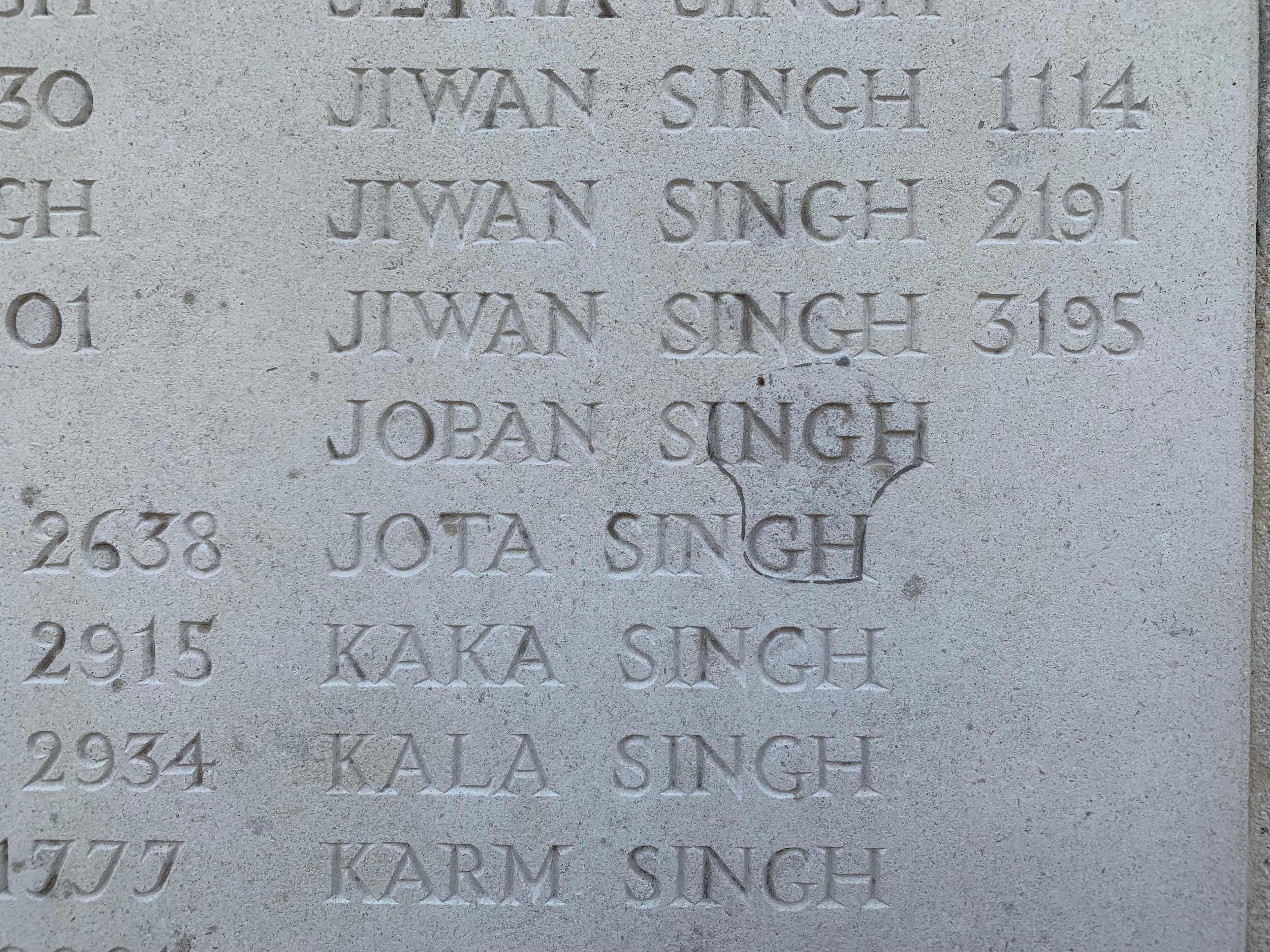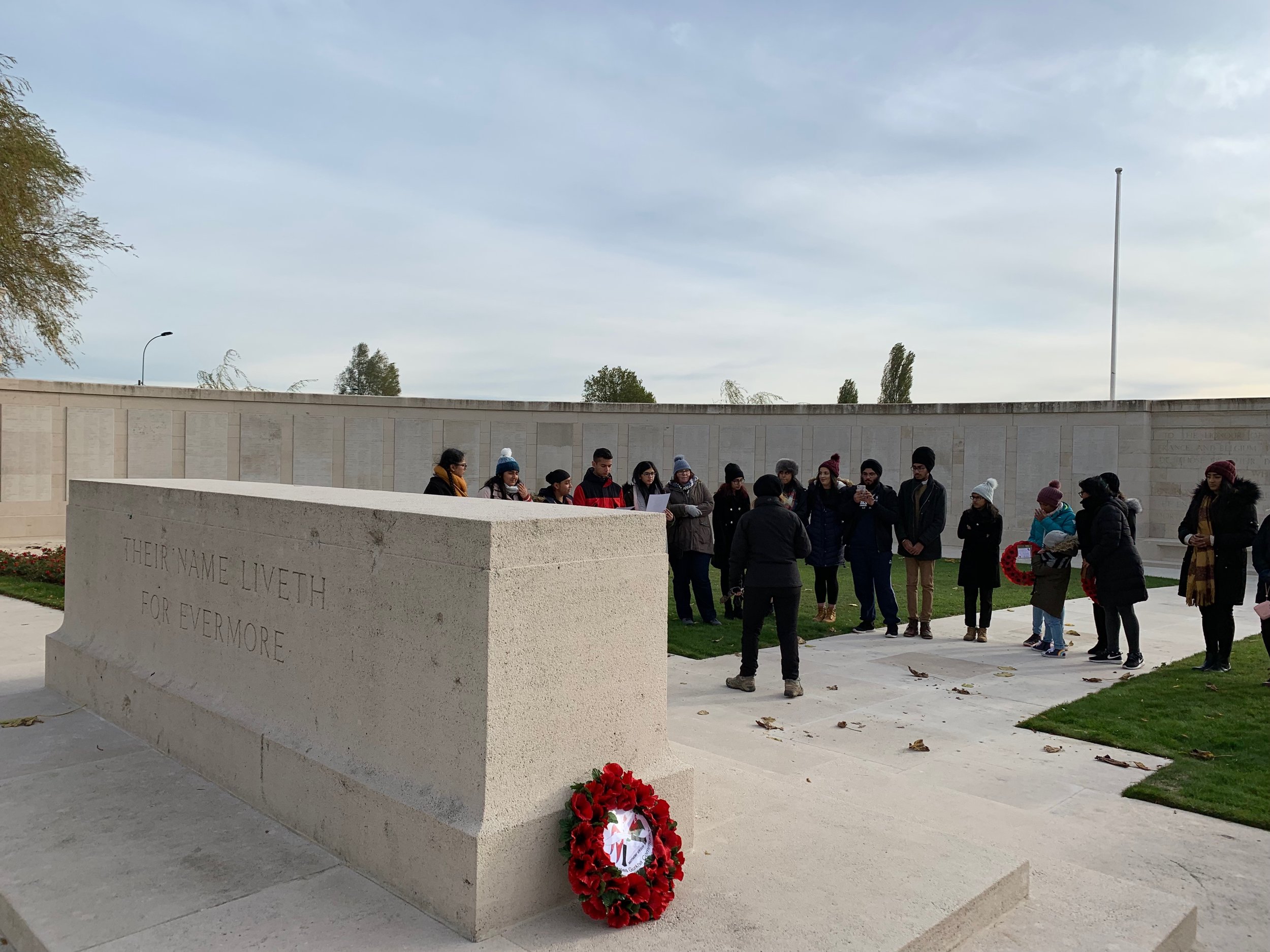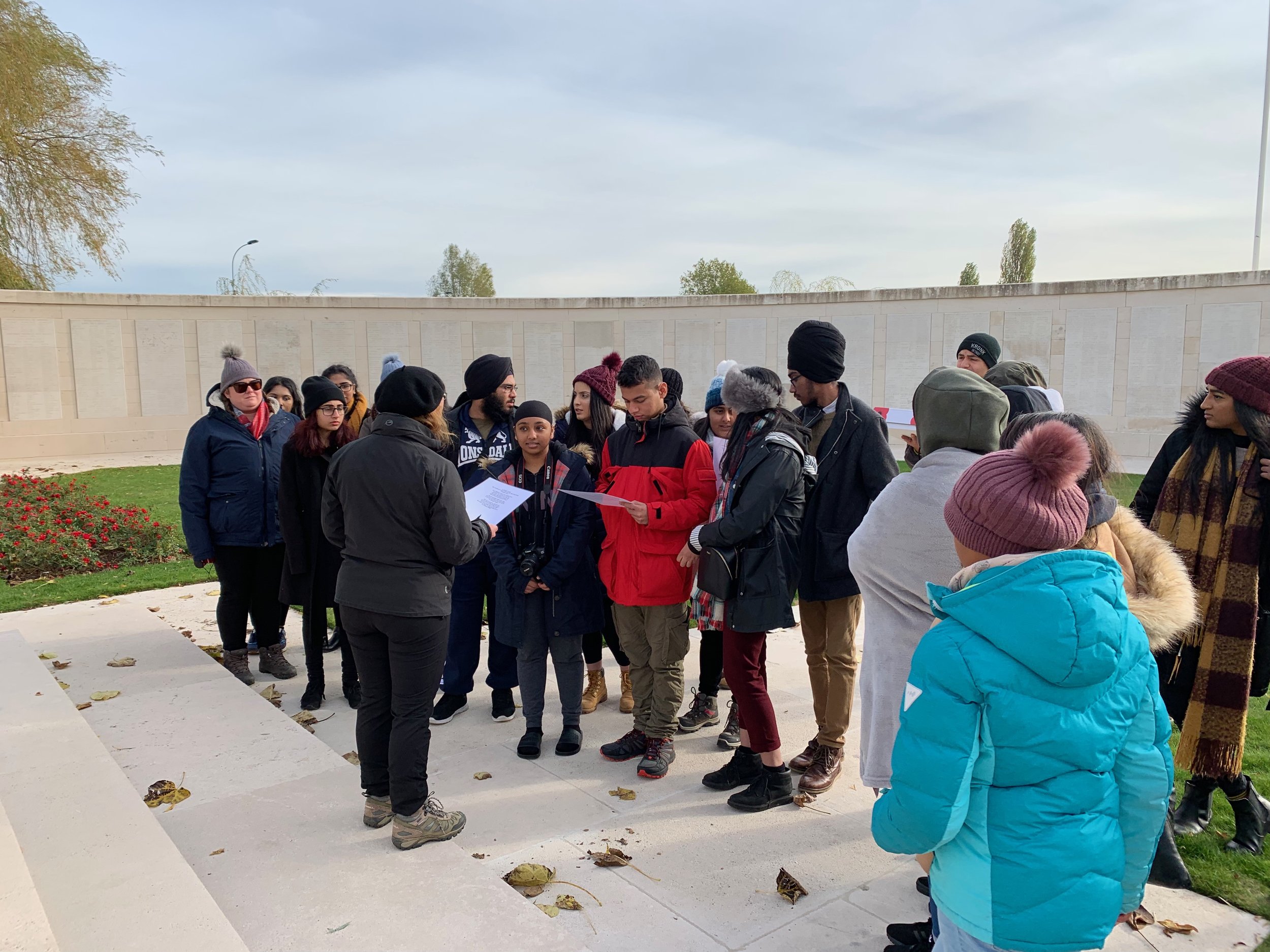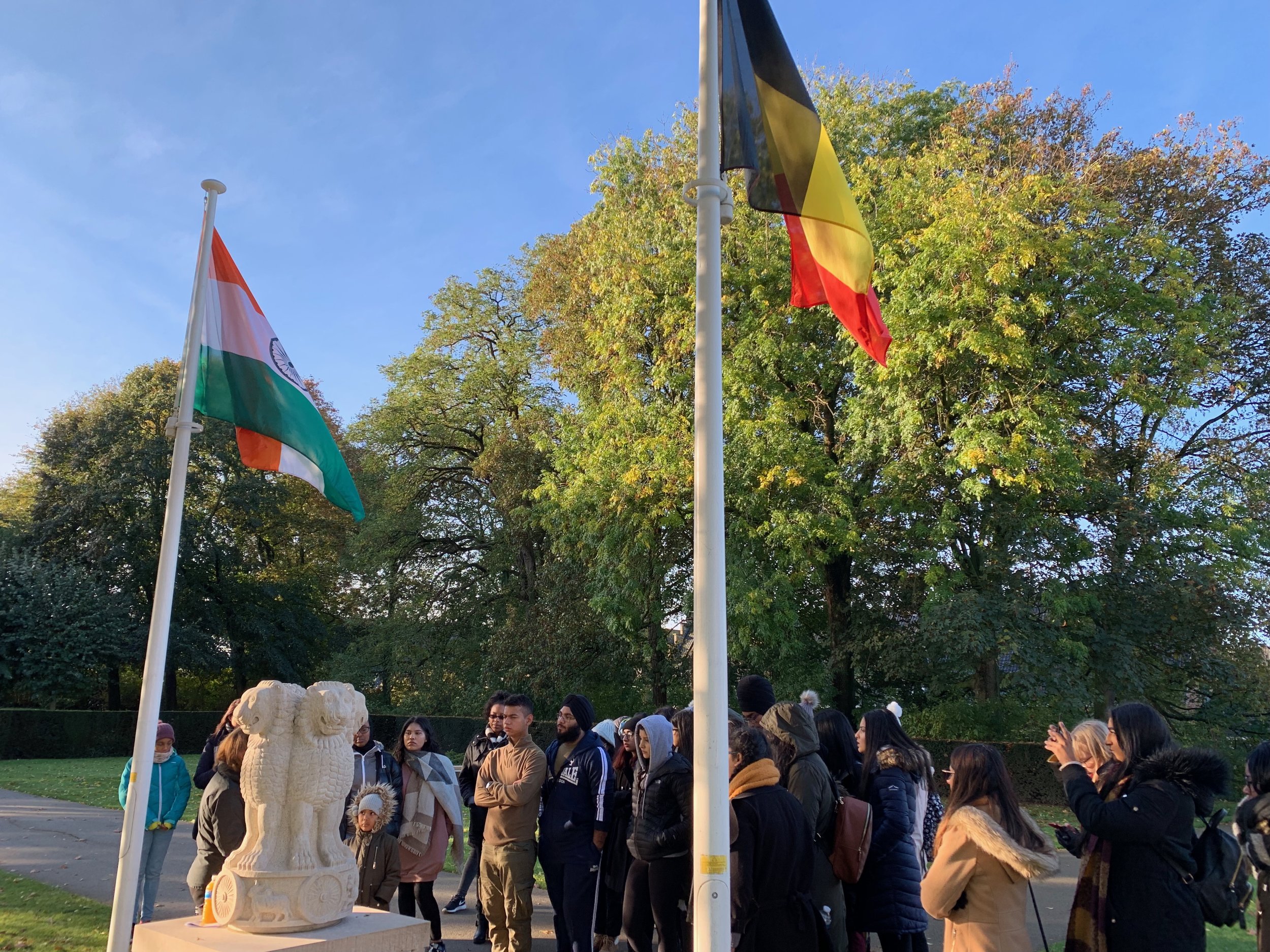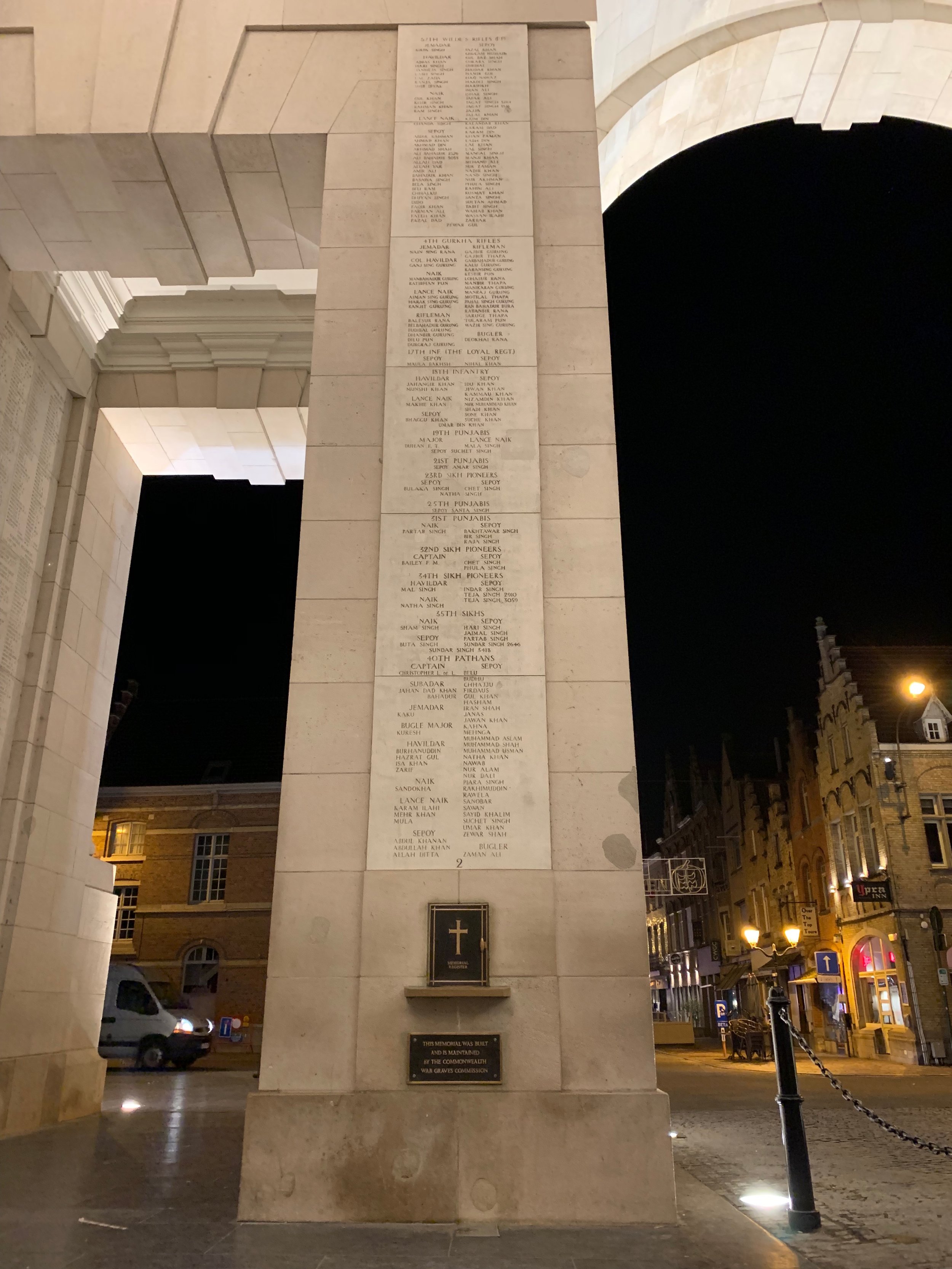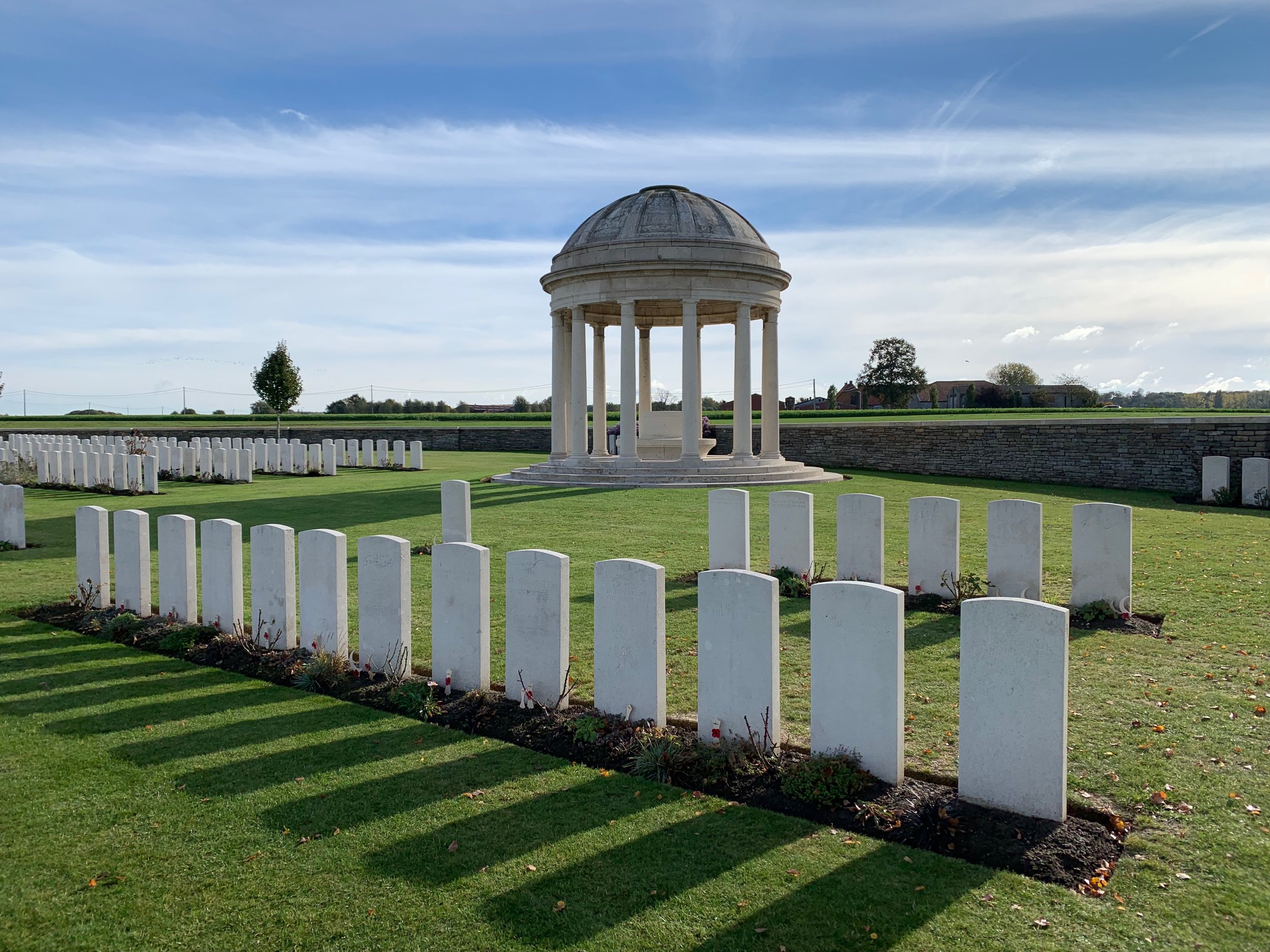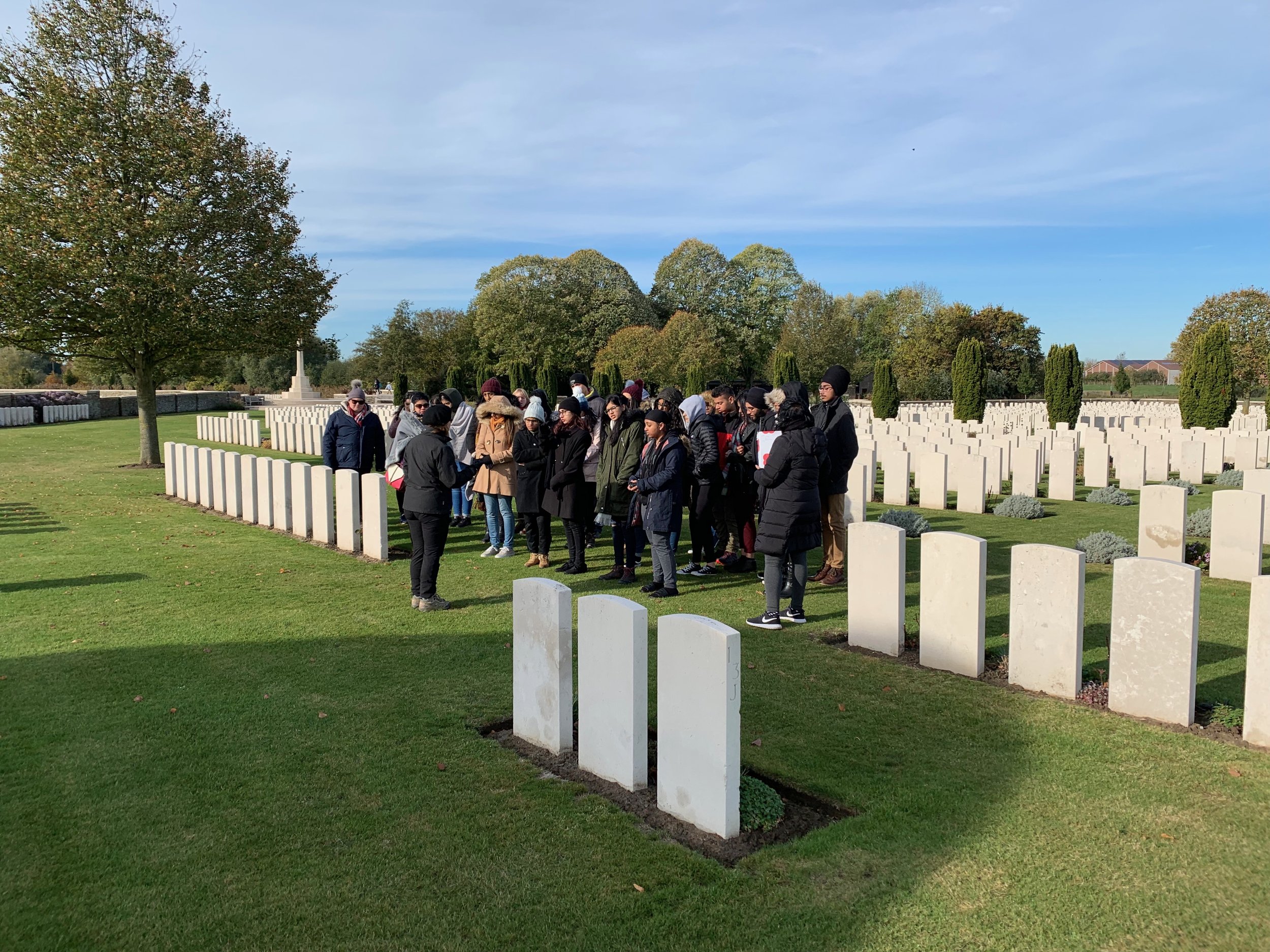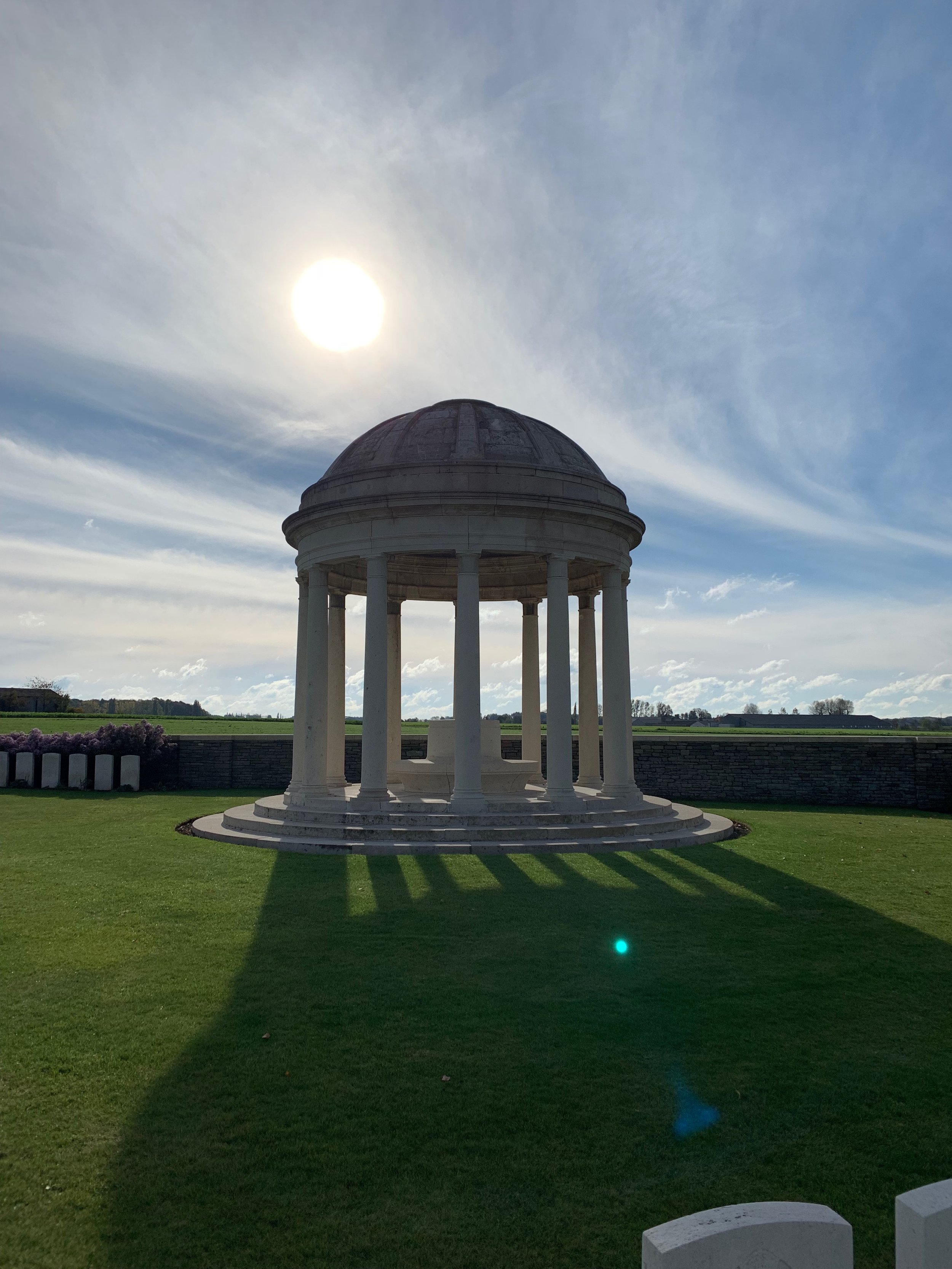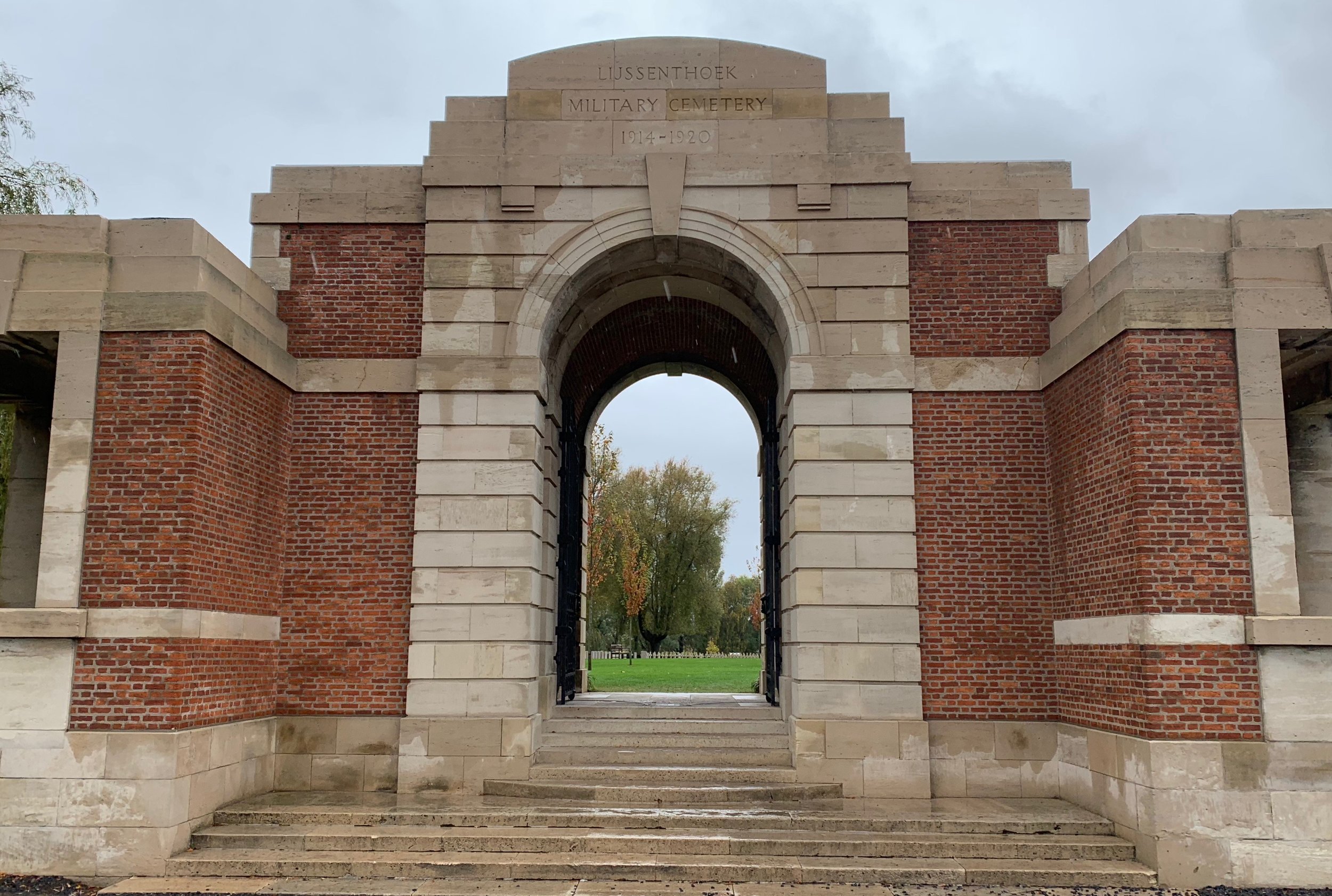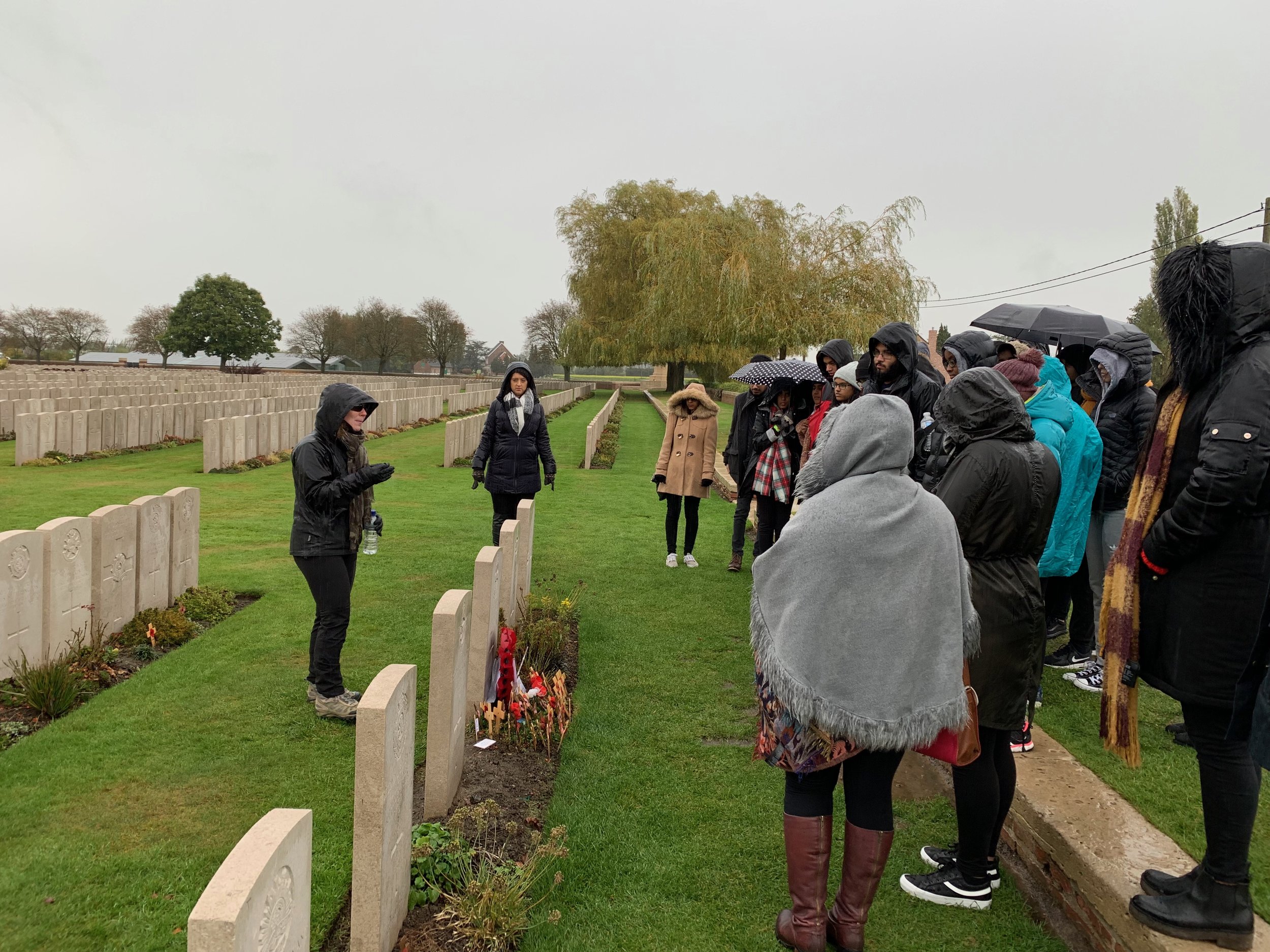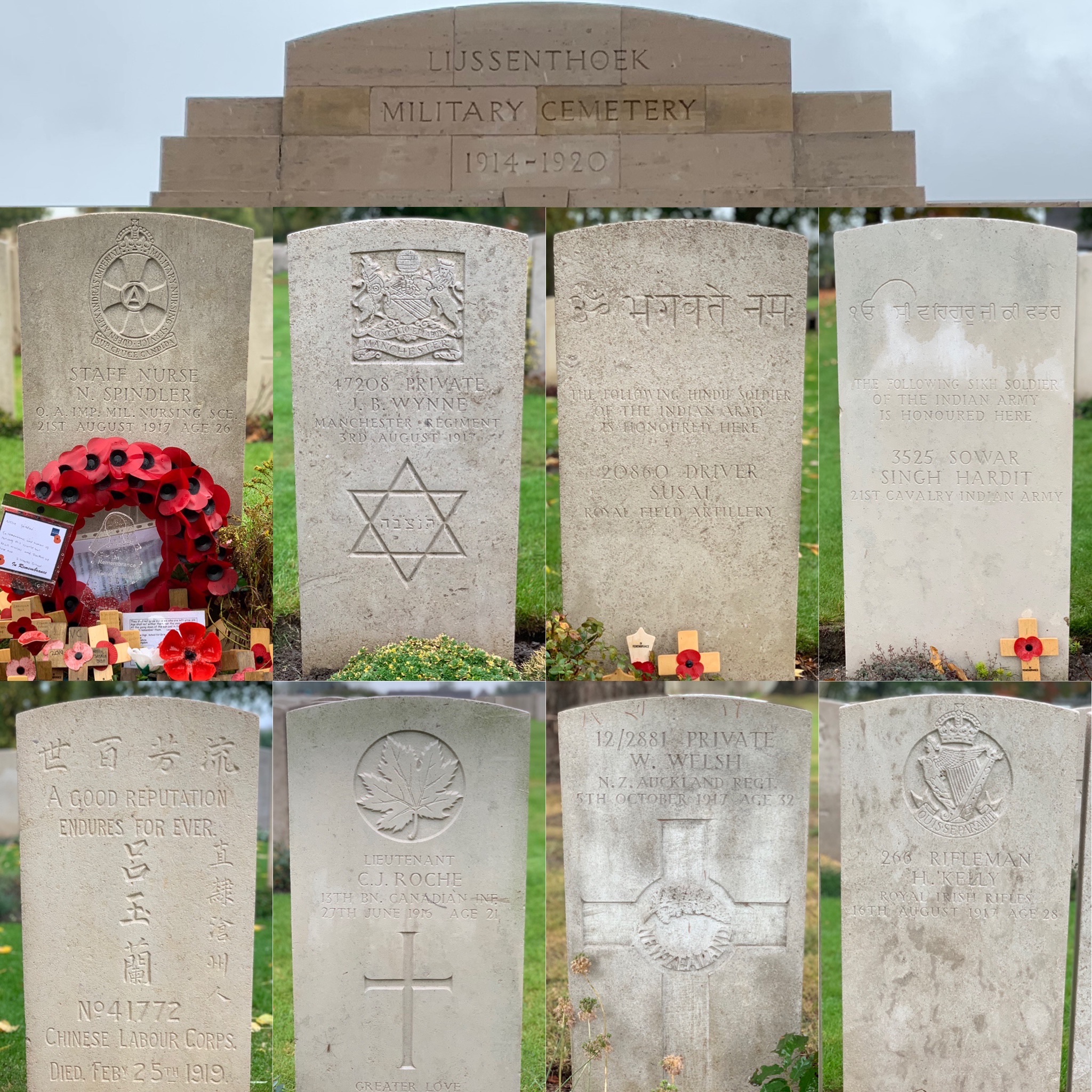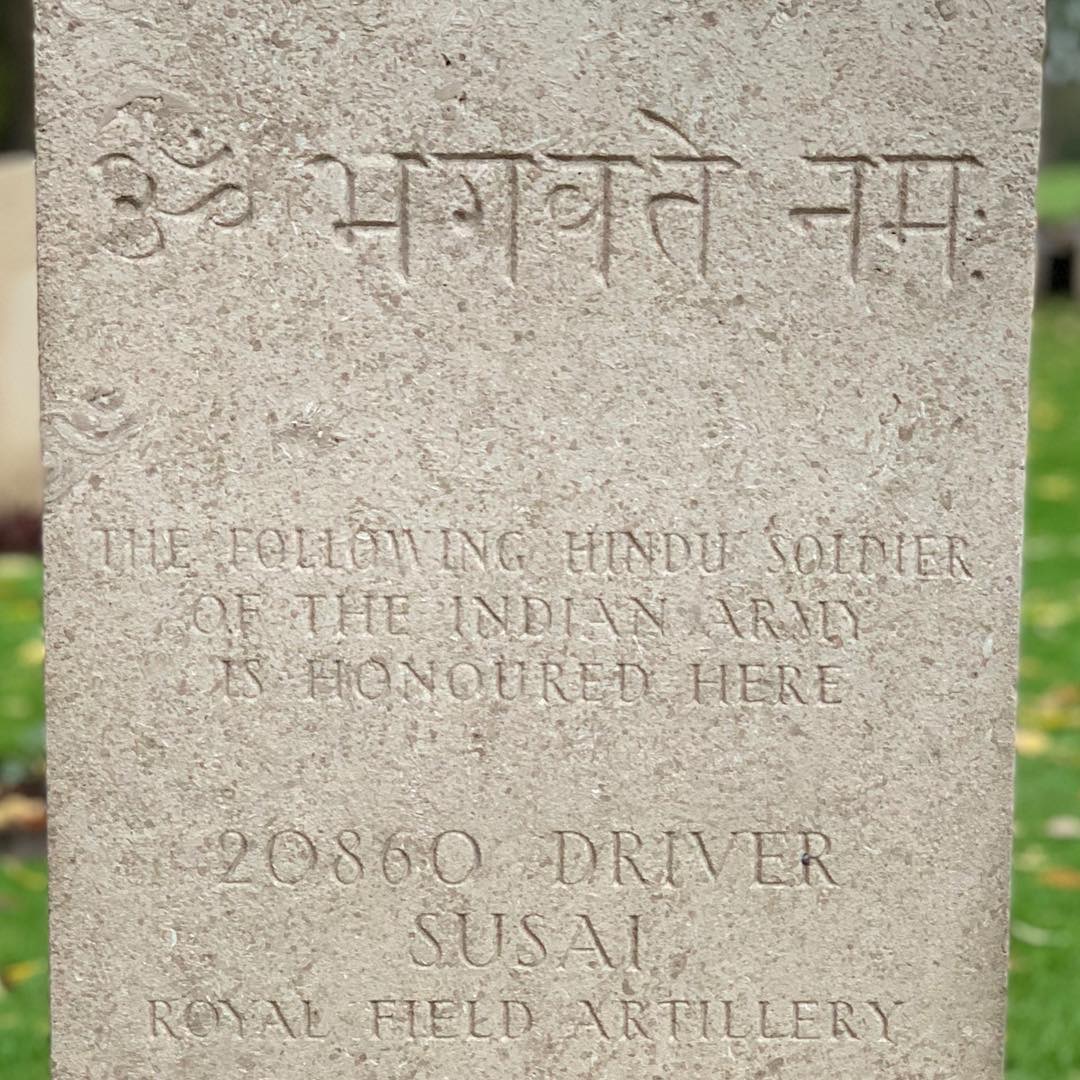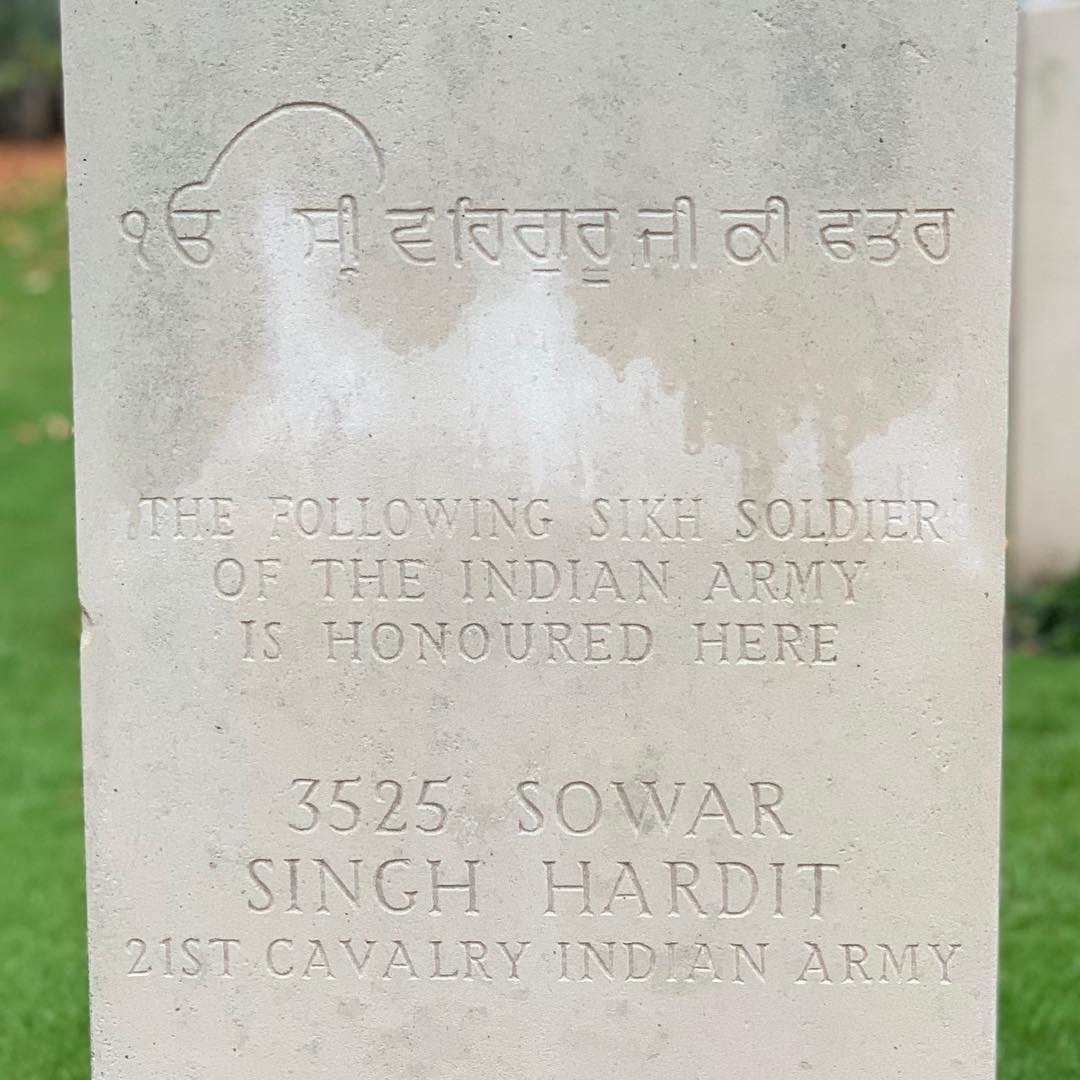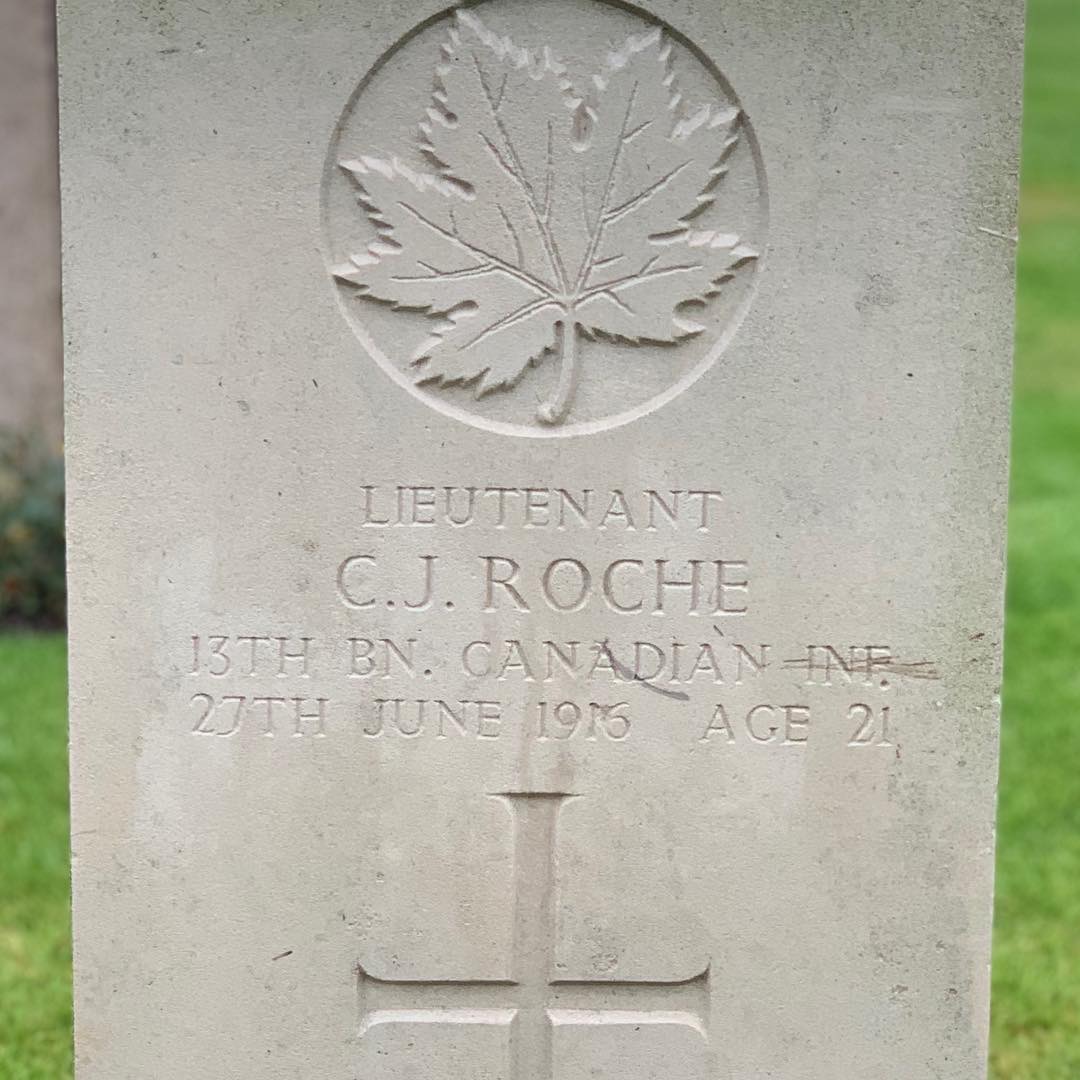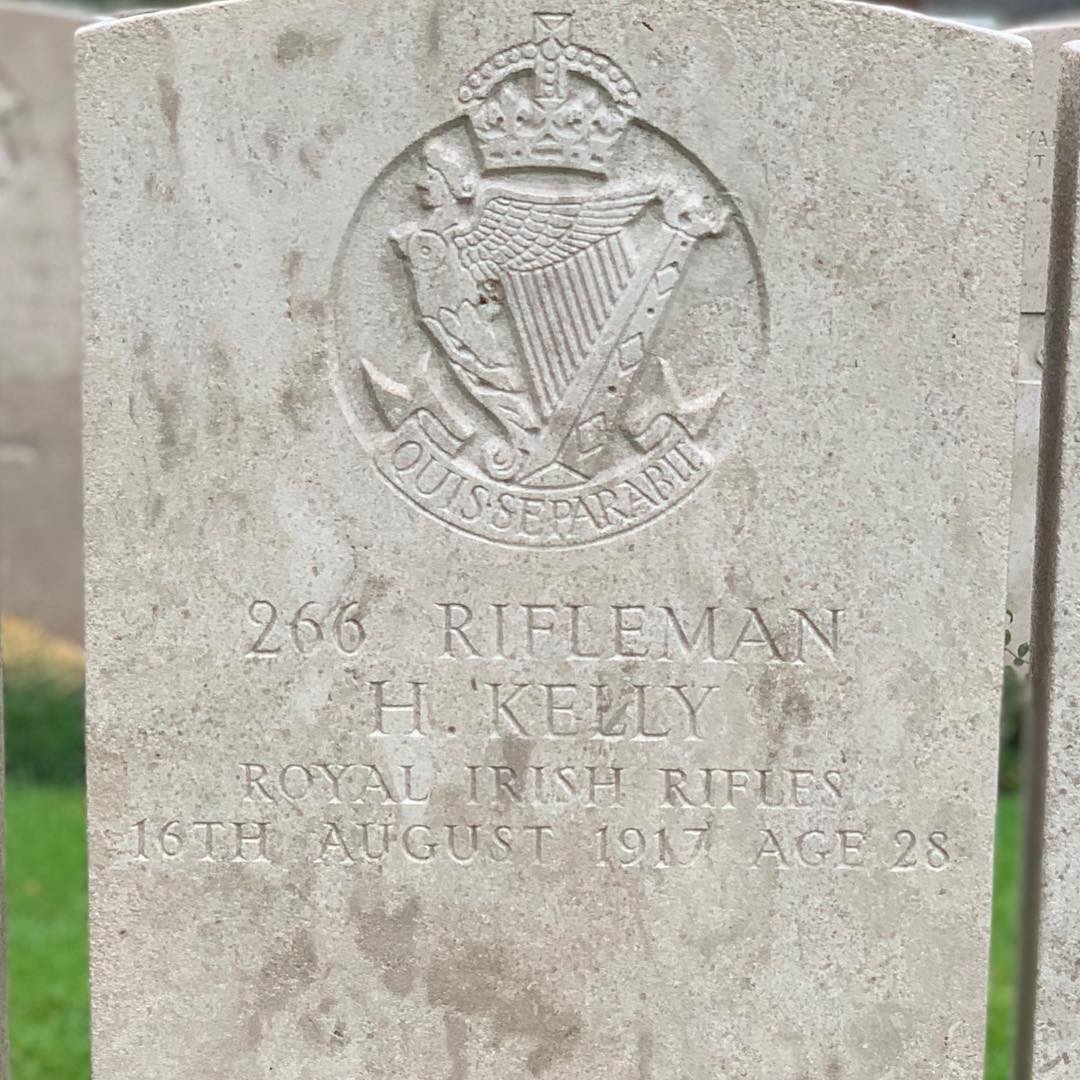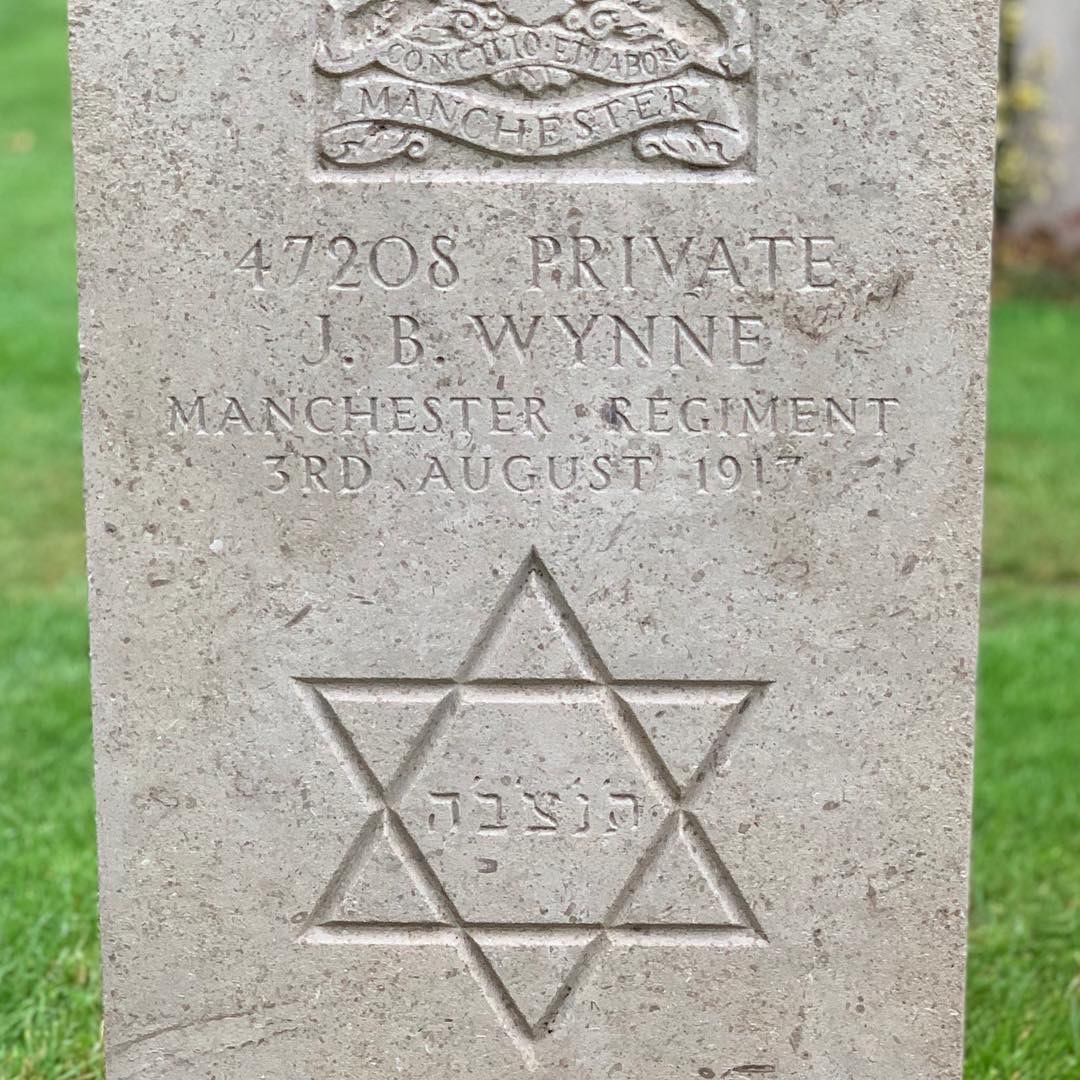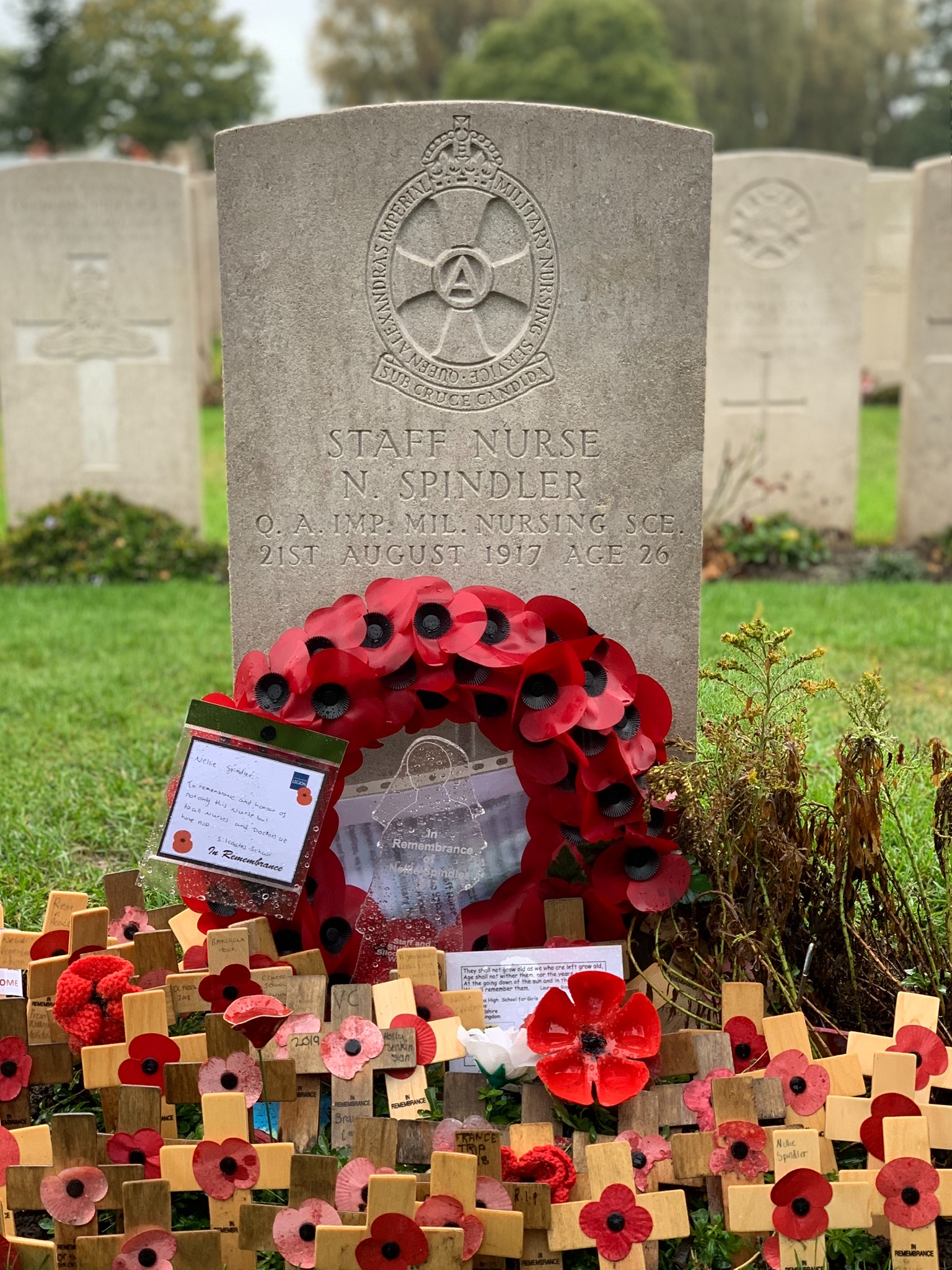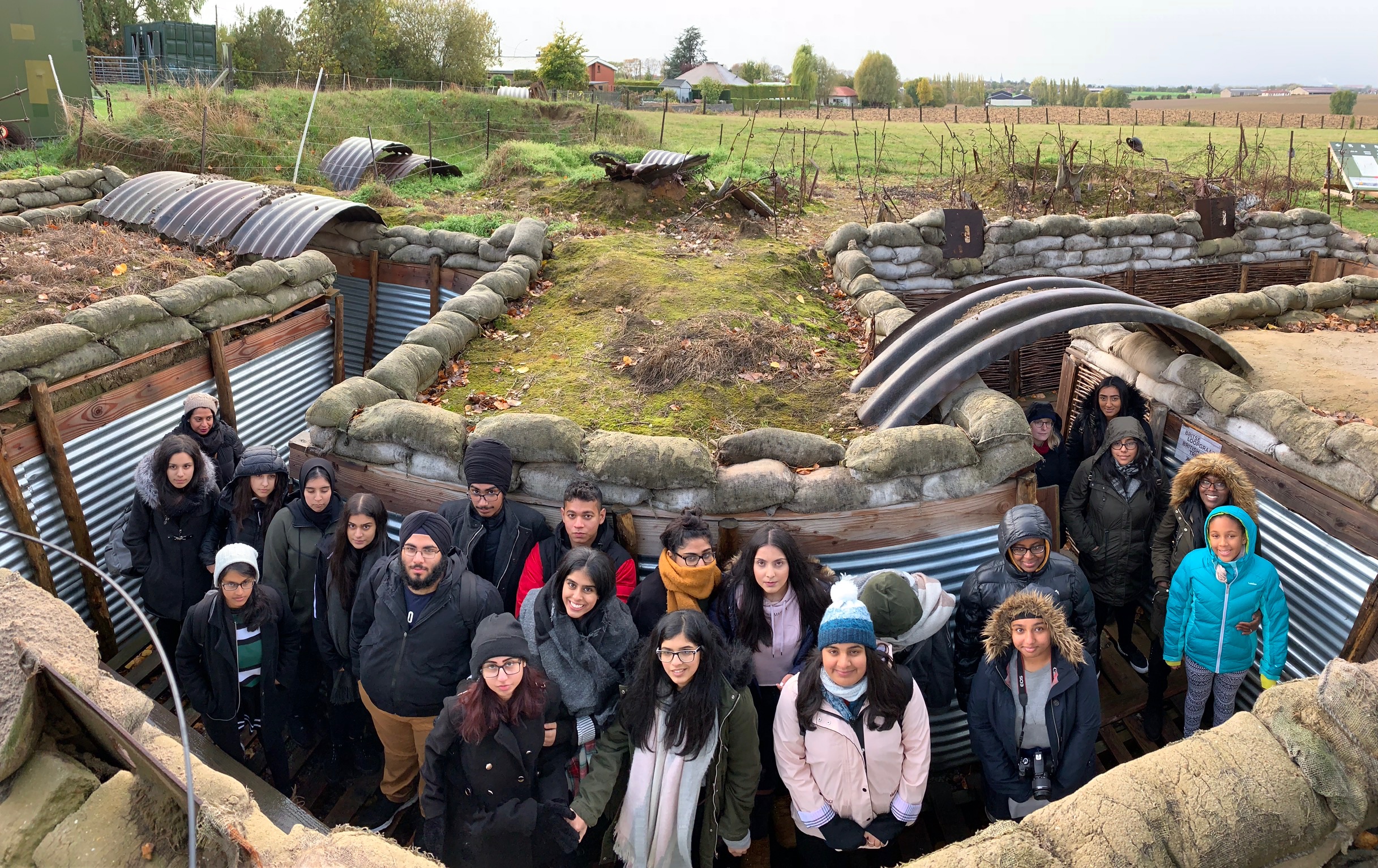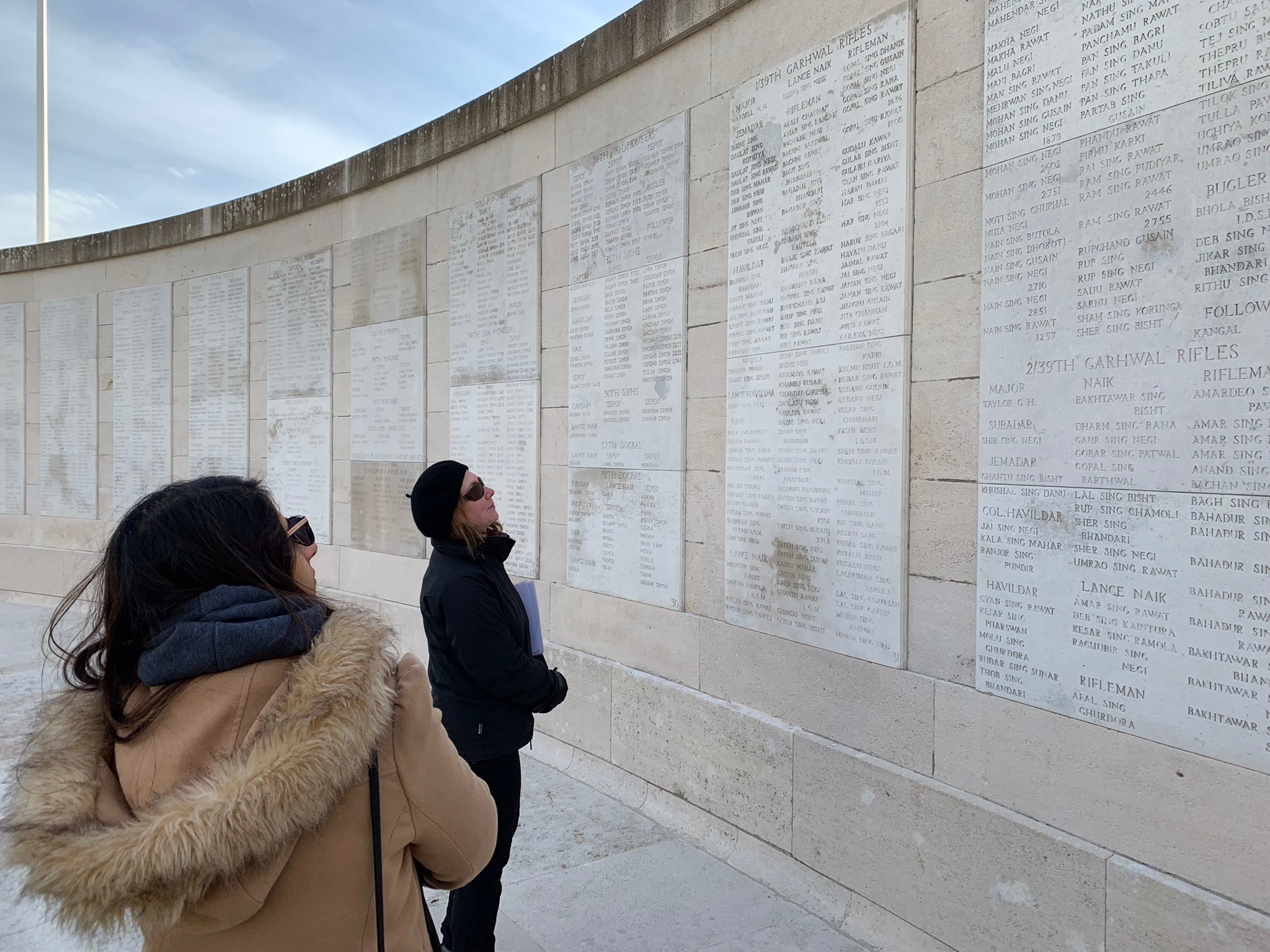Western Front Trip
We all had researched and spoken about the Western Front so much as part of our project, that getting the chance to see it for ourselves - words could not describe how excited I was. Accompanied by our young people and community volunteers, our personal guide Paula Kitching made sure this would be a weekend where all our knowledge would be tested. Thanks to We Were There Too, who paid for all of us to have this experience; it would not have been possible. In our two-day tour we visited Hill 60, Menin Gate, Neuve Chapelle and many more.
We arrived at Lijssenthoek CWGC cemetery, here we would be visiting the graves of Sikh and Hindu Soldiers as well as the grave of a female nurse. It is situated on the main communication line between the Allied military bases and the Ypres battlefields and in June 1915, it was being used for clearing casualties.
There were Sikh, Hindu, Muslim graves next to Jewish and Christians - many of the young students on the trip were surprised and hadn’t considered that each faith group would been divided. Some of the graves we came across were Susai (Sepoy), Hardit Singh (Sower) and Nellie Spindler (Nurse). After exploring we made our way to Hooge Crater Museum.
The Hooge Crater Museum is in Belgium, Flanders Field and is a museum of the First World War. It has reconstructions of war scenes, a wide variety of weapons, uniforms and photographs. We were able to visit a trench and everyone got to experience what it must have been like for those fighting in the war. This was different to what they had seen in the books and media - now they got to experience it for themselves. They also got to hold a rifle to experience what it was like for the soldiers back then. The rifles were heavy and Paula explained that when the troops were under attack to reload a rifle could be tricky.
In the evening we went to Menin Gate and some of the students were going to take part in the Last Post ceremony. Since 1928, the Last Post ceremony has sounded every evening at 8pm under the memorial. The only time the ceremony has been interrupted was during World War Two. Three students took part in the ceremony and laid a wreath - there were hundreds of people from all over taking part and watching the ceremony. There are approximately 54,000 names on the memorial and a wall dedicated to Indian troops who have no known grave. There are names such as Bhan Singh (sepoy) 9th Bhopal Infantry, Amar Singh (sepoy) 21st Punjabis and Bara Khan (sepoy). The evening was surreal - everyone fell silent together and it was extra special with everything we had learnt together.
The next day we headed to several more cemeteries and came to Bedford House, were we visited the cemetery and saw gravestones of Sikh, Hindu and Muslim soldiers alongside men of different faiths. The young people with us got to lay tokens of remembrance at the cemetery and had time to explore.
Finishing off our weekend the last stop was Neuve Chapelle, located in France - a memorial that had a dedication to Indian soldiers with no known grave. The memorial walls had the names of the men who were awarded the Victoria Cross in First World War. Our students were engaged, reading poems and we held our own remembrance service by laying wreaths. I was in awe, finally seeing it with my own eyes, especially since I knew that this place held names of Indian soldiers that I have researched in my previous exhibition. I was able to place my hand on the names etched on the memorial and felt this project was honouring all these men that we could not tell the stories of. Some of our young people were interviewed by BBC Asian Network about visiting Neuve Chapelle and what it means to them.
It had been an exhausting but interesting weekend. We had learnt so much and now seeing everything with our own eyes and being able to experience and part take in ceremonies would be an experience none of us forgot. Our group enjoyed having the chance to find out more about their own histories. They had stories that they could take back home and share with their friends and families - we had provided them with learning that they would never have been able to access.



